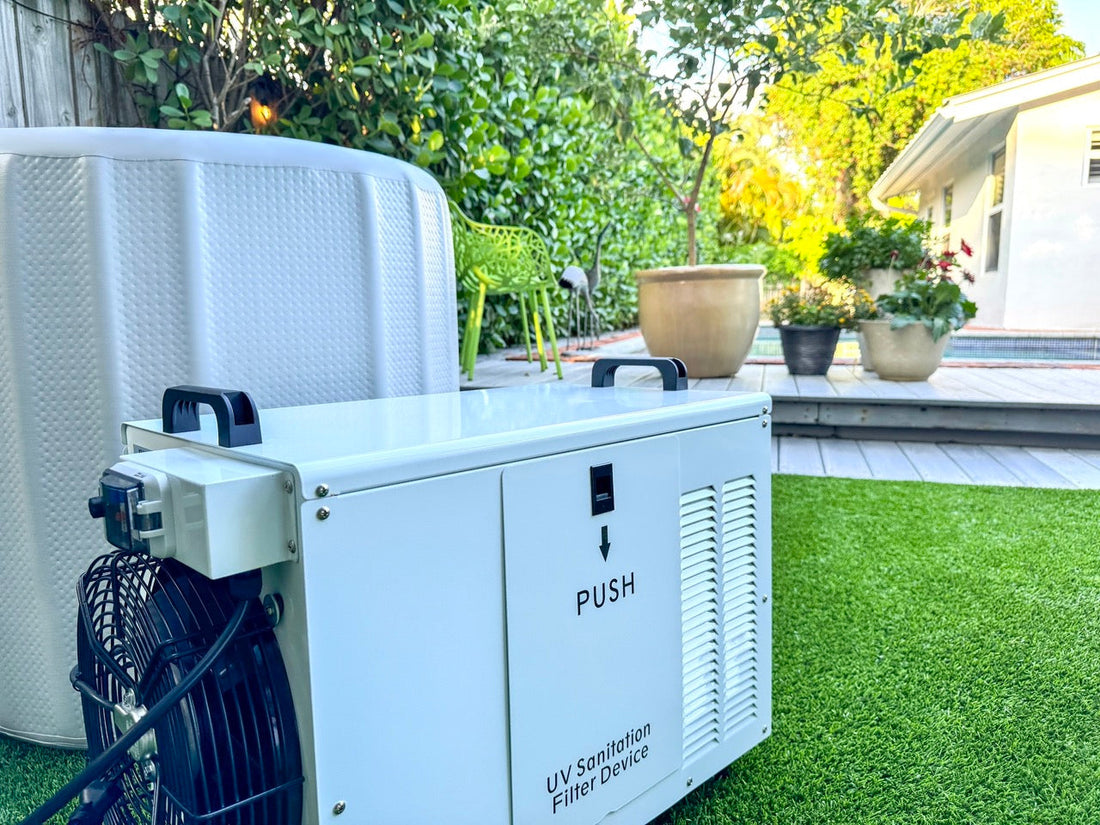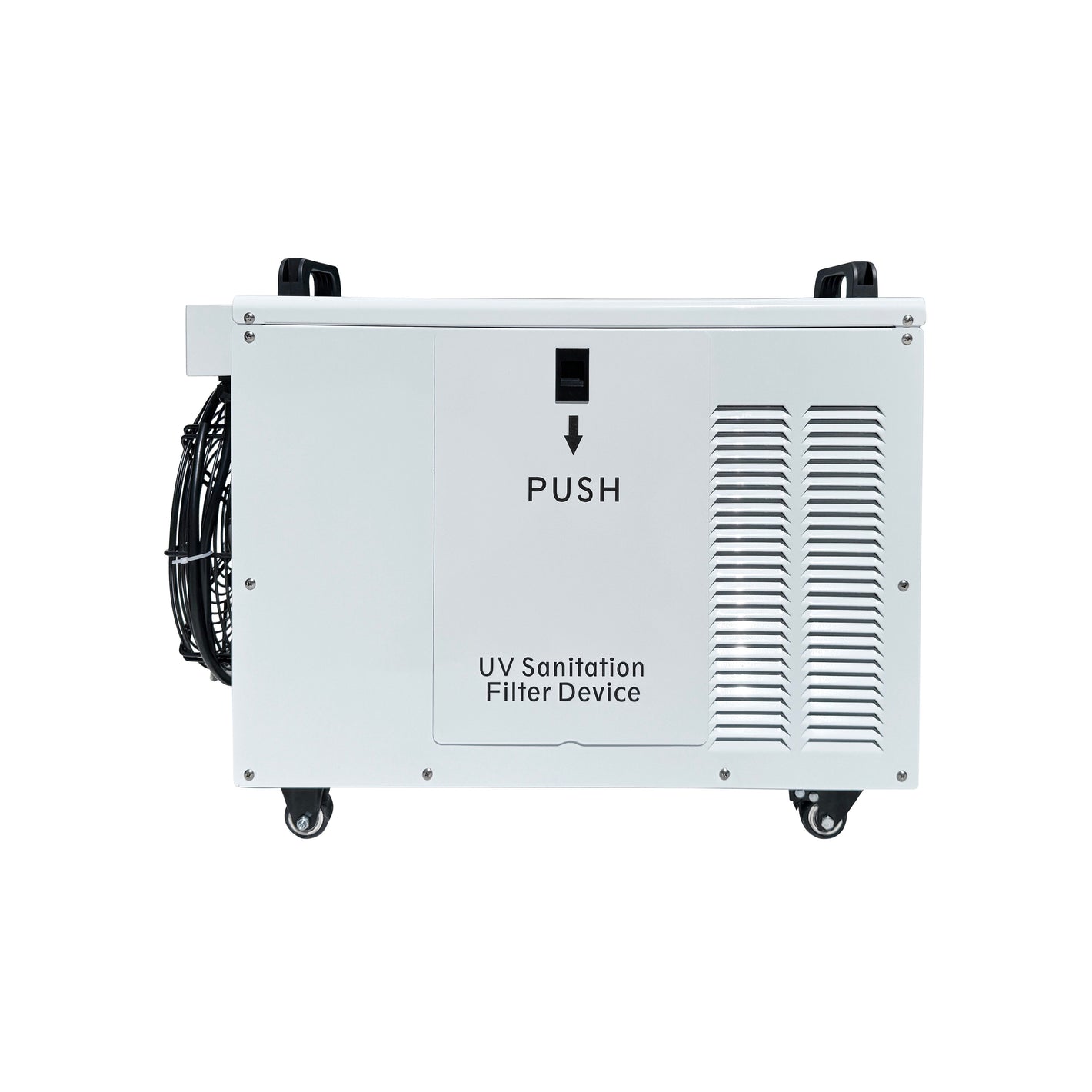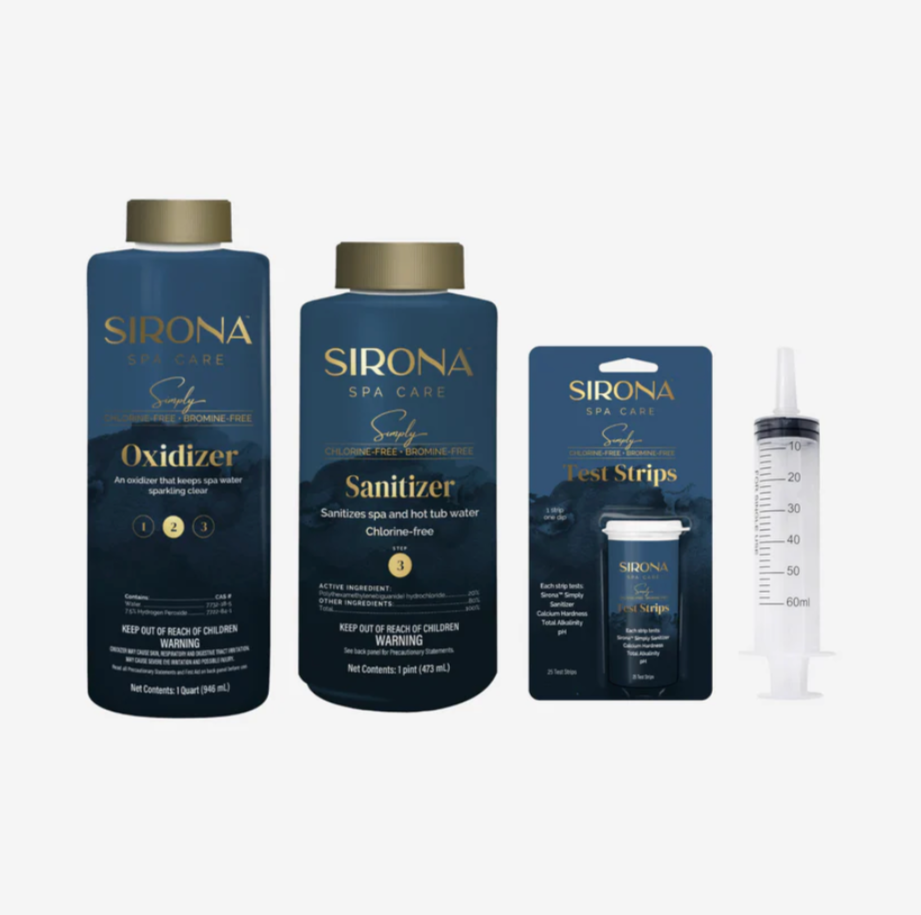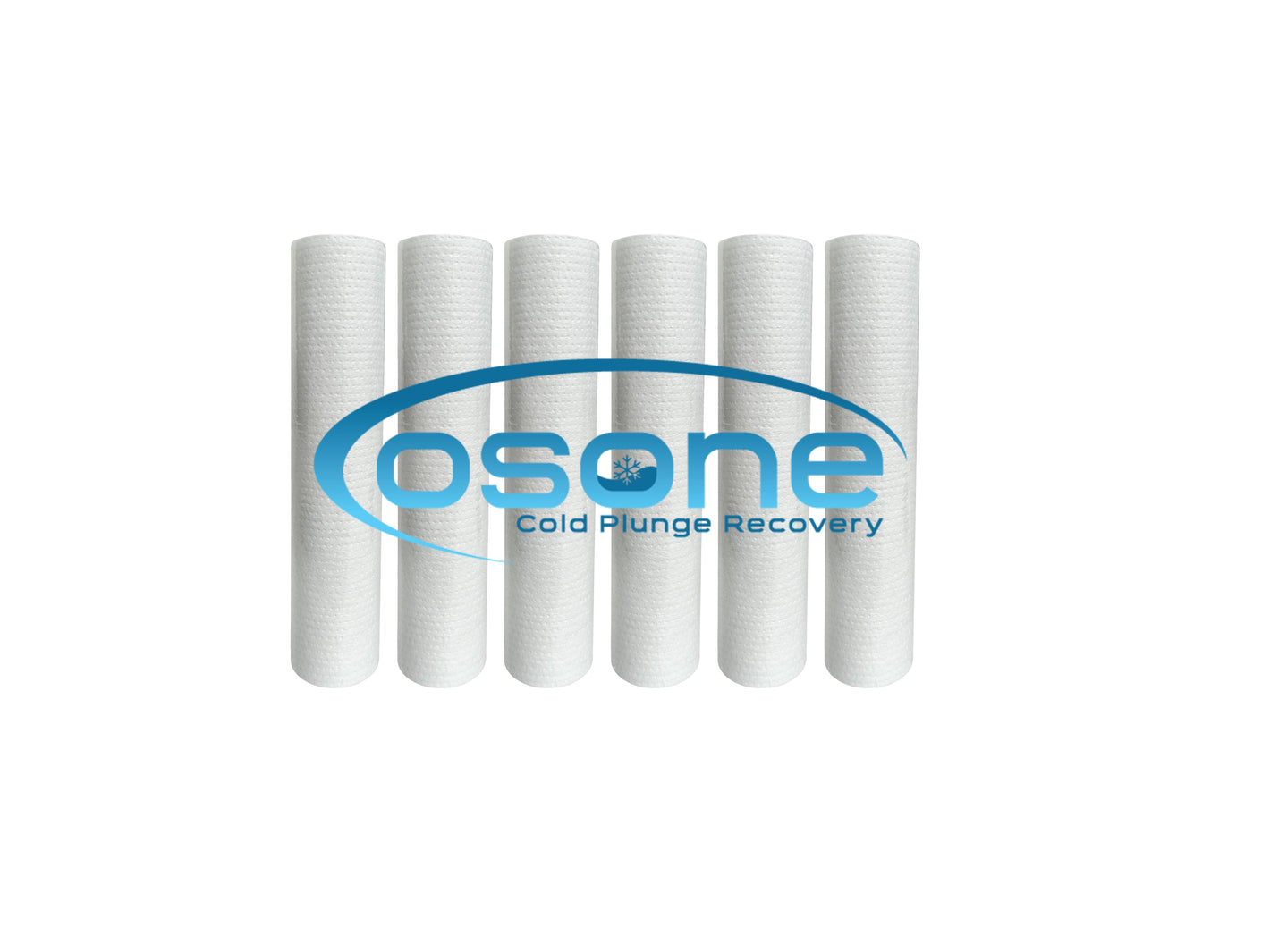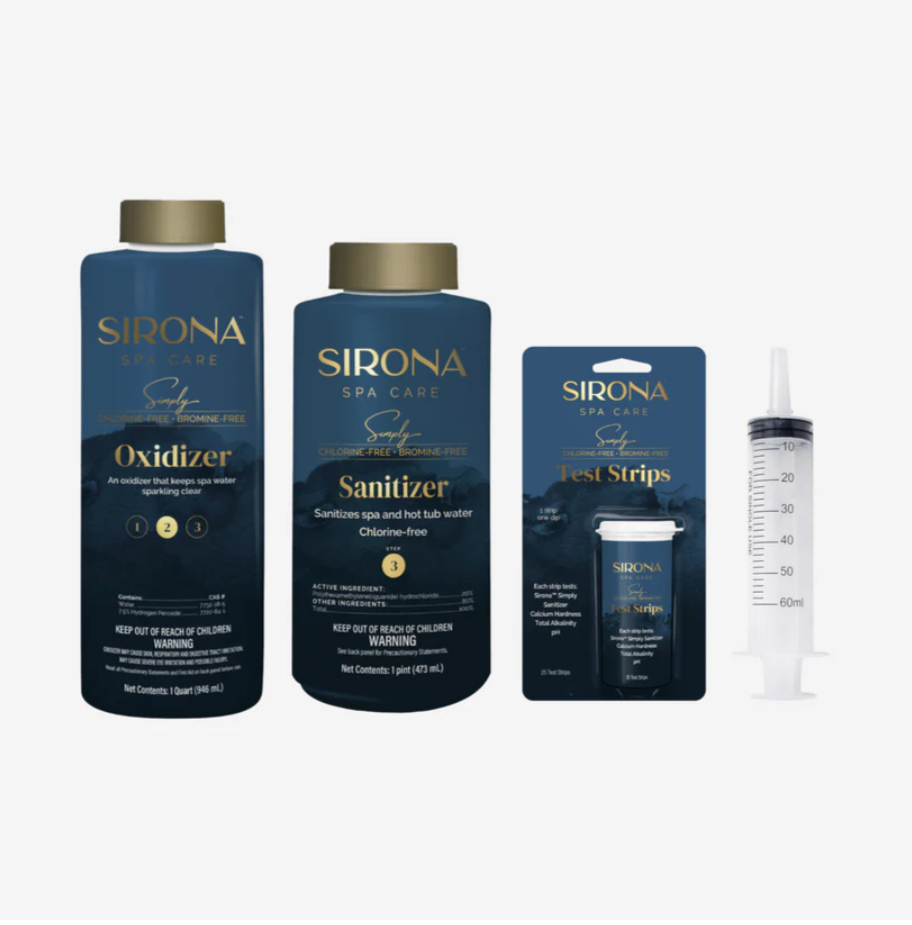Chiller Temperature Reading Lower Than Actual
If air gets trapped inside your chiller, it prevents proper water flow back into the cold plunge. As a result, the chiller only cools the small amount of water inside it, which can quickly become colder and colder (depending on your settings) since no fresh water is circulating from the plunge.
Causes of Trapped Air
Several factors can contribute to trapped air in the chiller:
- Air in the Filter Cartridge: The #1 cause of air getting trapped in the chiller is because on filter replacement, the new filter goes in dry. Make sure to fill the filter housing with water prior to completing the filter replacement.
- Filter Blockages: Clogged filters can create air pockets as water struggles to pass through the accumulated debris.
- Low Water Levels: Insufficient water levels in the plunge can lead to air being drawn into the system instead of water. Ensure there is enough water in your cold plunge to cover the outlet (usually bottom hole) of your plunge.
- Air Leaks: Loose fittings or connections can allow air to enter during operation.
Steps to Resolve the Issue
- Inspect and Clean the Filter: Start by inspecting the filter for any signs of blockages or debris buildup. Clean the filter thoroughly or simply replace with a new filter.
- Ensure there is no air in the filter housing. If you're able to see air in the filter housing, unscrew the housing, fill the housing with water all the way to the top while the filter is inside and screw back in place.
- Verify Water Levels: Ensure that the cold plunge has an adequate water supply. Low water levels can contribute to air intake. At a minimum, water levels should be over the outflow hole (usually the bottom hole of your cold plunge).
- Check for Leaks: Examine all connections and fittings in the plumbing system for signs of leaks. Tighten any loose fittings to prevent air from entering the system. Always use plumber's tape over any threading.
If you're still not seeing flow from the chiller into your plunge, grab your garden hose with spray nozzle. With the chiller turned on, set the nozzle to JET mode and place it directly over the outlet hole of the plunge (bottom hole). As you push water through the bottom hole, water will be forced through the chiller lines which will clear any leftover air remaining in the system. If done properly, you will see water flowing out of the inlet hole of the plunge (top hole). We recommend 3 minutes of manual water pressure to remove all air from the system. Upon completion, turn chiller off and turn back on. Once the compressor kicks in, as long as your set temperature is lower than the water temperature in your plunge, water flow should return and your chiller operations should be back to normal.
Establish a regular maintenance schedule for your chiller including checking water flow, routine filter cleaning, appropriate water levels and secure hose fittings. This proactive approach can prevent future issues and prolong the life of your equipment.
We suggest checking water flow out of the inlet of your cold plunge (usually the top hole of the plunge) every time you enter your plunge as a quick maintenance checkpoint. We also suggest replacing the filter once a month.

